The Visual Anatomy of a Great OM: What Every Winning Offering Memorandum Should Include

A great commercial real estate deal starts with a compelling story and your offering memorandum (OM) is how that story gets told. Whether you’re marketing a multifamily property, office park, or retail center, the OM is your pitch deck, sales brochure, and financial snapshot all in one.
However, not all offering memorandums are created equal. The most effective ones follow a proven formula: well-designed, rich in information, and easy to digest. Here’s what every winning OM should include to make a lasting impression and capture investor attention. Let’s break down the key elements that set high-performing OMs apart.
1. Start with Balanced, Professional Design
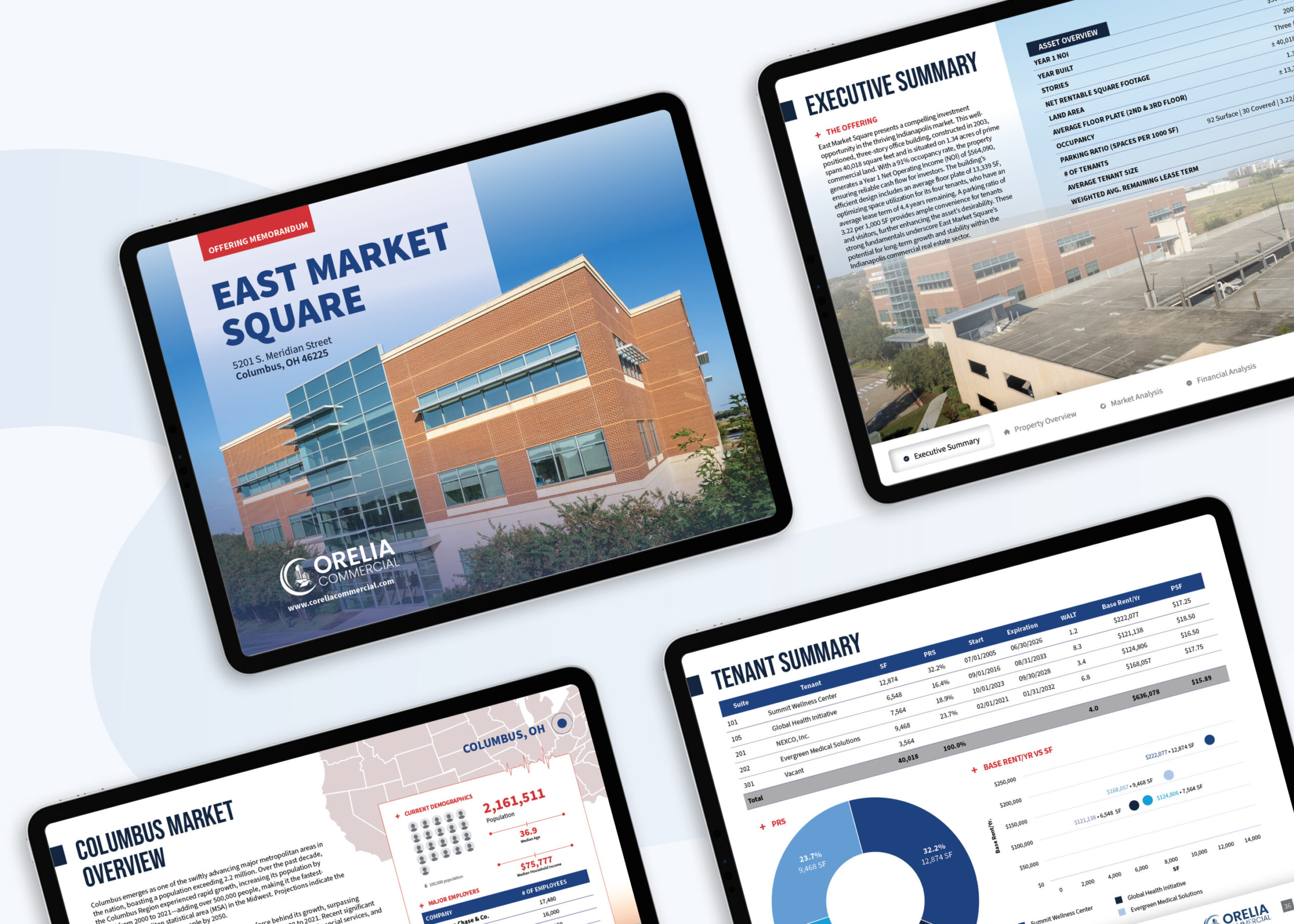
Your OM often serves as your first impression, so make it count. A thoughtfully designed layout builds trust and sets the tone for the rest of the document. Use a clean, well-branded format with consistent colors, fonts, and high-quality visuals. Balance aesthetics with function with grid-based layouts or visual hierarchy to enhance readability.
2. Let High-Quality Visuals Do the Heavy Lifting
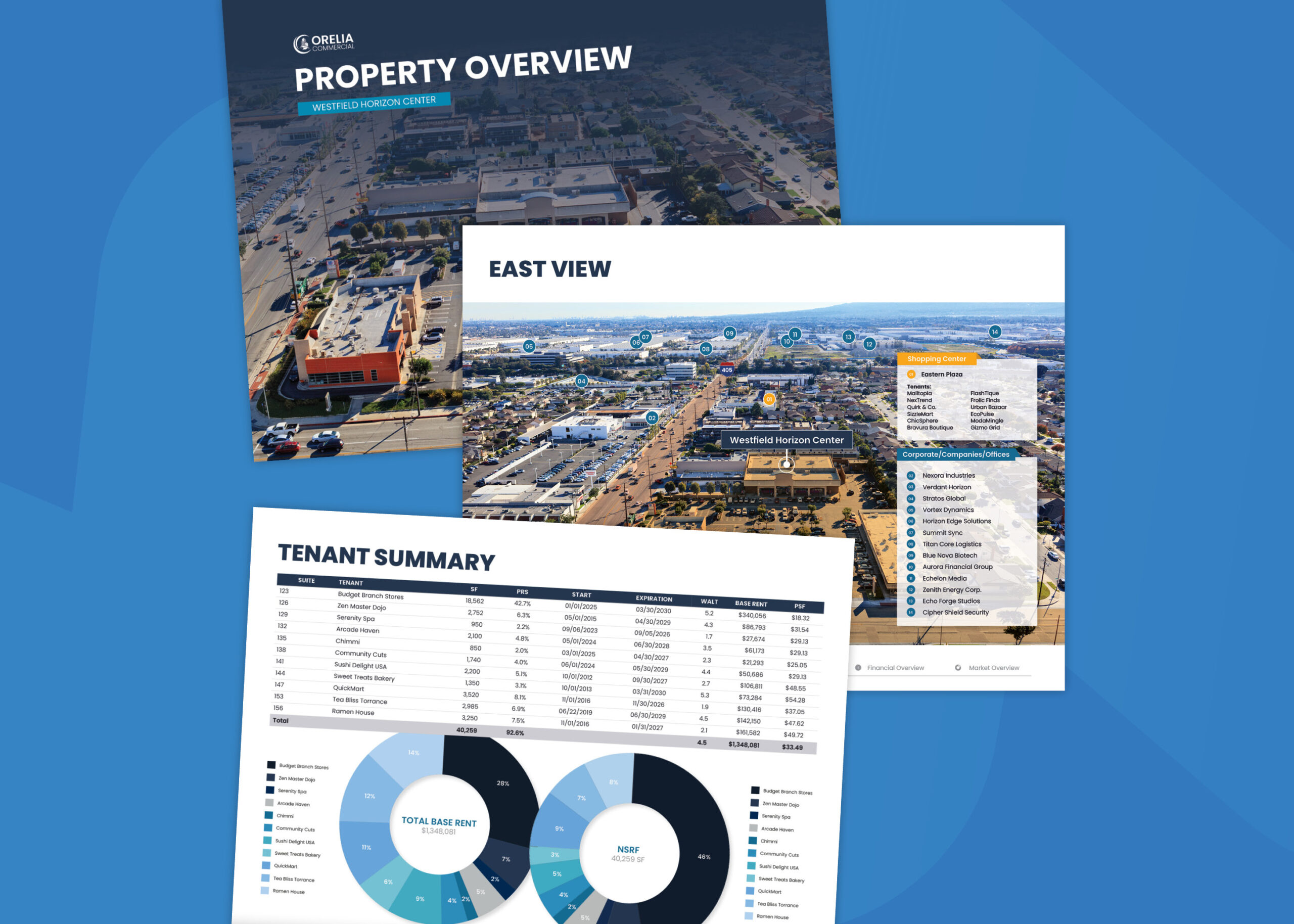
Professional visuals aren’t just decorative; they help sell the property. Include high-resolution photos, site plans, illustrated maps, and aerial drone shots to bring the asset to life. These images make the property more tangible and help investors envision its potential. Think of visuals as your silent salesperson: they should do as much heavy lifting as your words.
3. Deliver Straightforward & Compelling Content
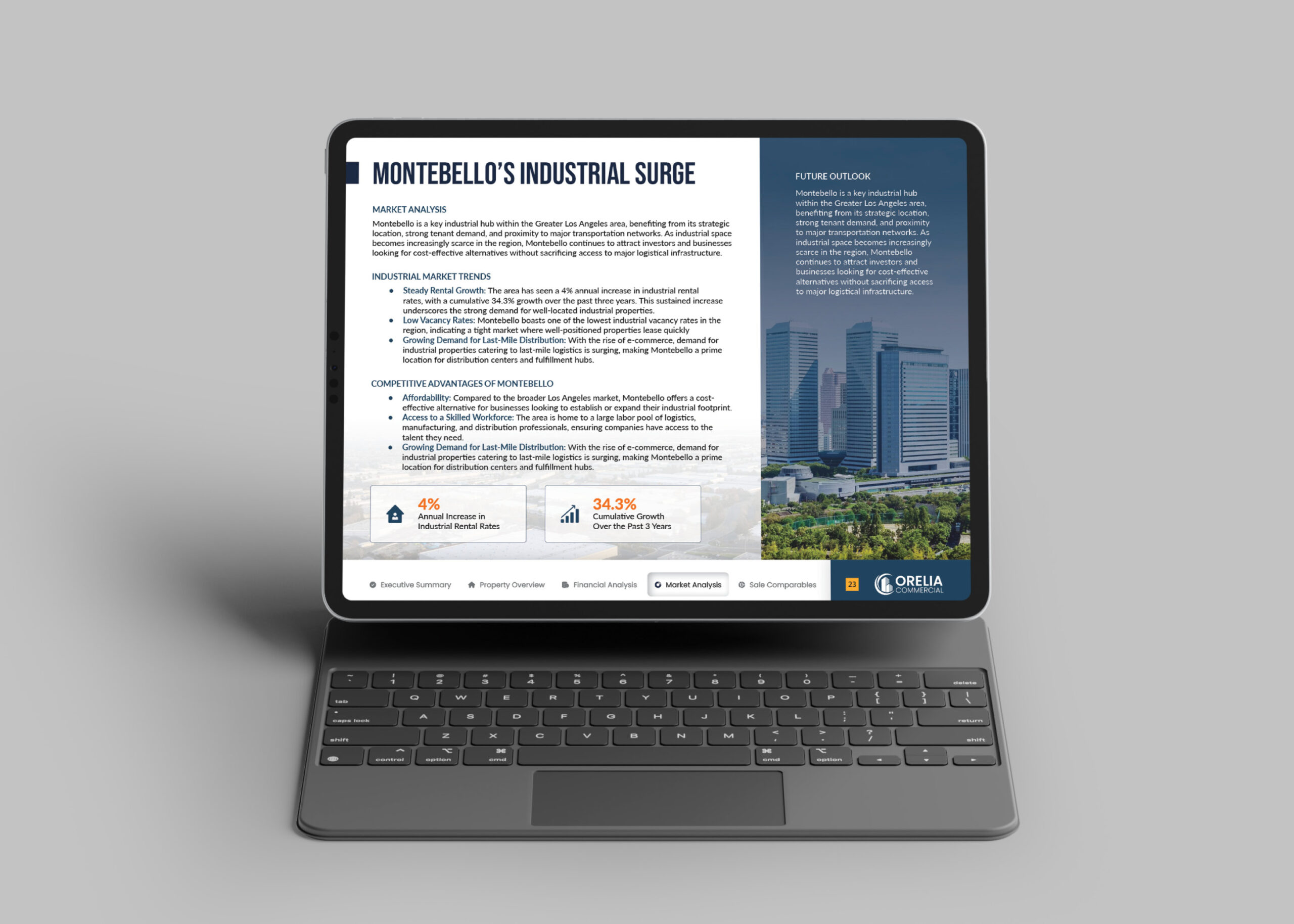
Investors are busy. The easier your OM is to scan and understand, the more likely they’ll stay engaged. Keep language simple, paragraphs short, and structure organized. Use bullet points, headings, and summaries to break up content, and highlight key financial figures so they stand out. Readers shouldn’t have to solve a puzzle to find essential information from returns to location advantages. Use clear map labels, callouts, and well-placed visuals to make the property’s value and potential instantly clear.
4. Present Financials with Clarity and Context
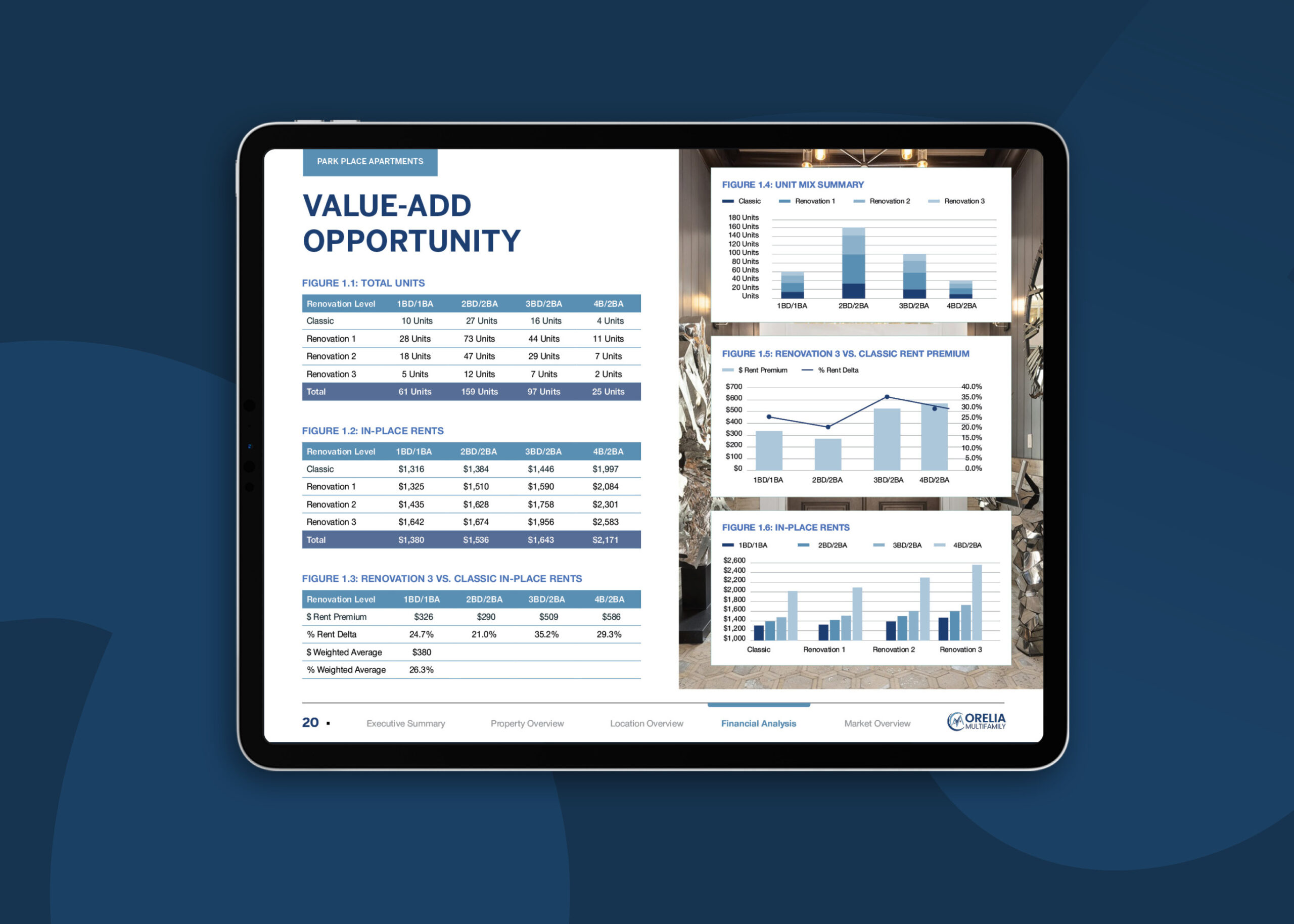
Financial transparency is everything. Your OM should include current income and expense details, projected returns, cap rates, and any value-add opportunities. Include charts and graphs to make complex financial information more digestible. Providing clear context around the numbers can help build investor confidence and drive faster decision-making.
5. Provide Strategic Location & Market Insights

Context turns numbers into narrative. Include a snapshot of the local economy, demographics, and comps to help investors see the full picture. Highlight strategic advantages: proximity to transit, redevelopment activity, inclusion in opportunity zones, or long-term zoning benefits. Don’t overlook the intangibles. Help investors see the value of the property and the upside potential.
6. Wrap it up into a Tight, Error-Free Presentation
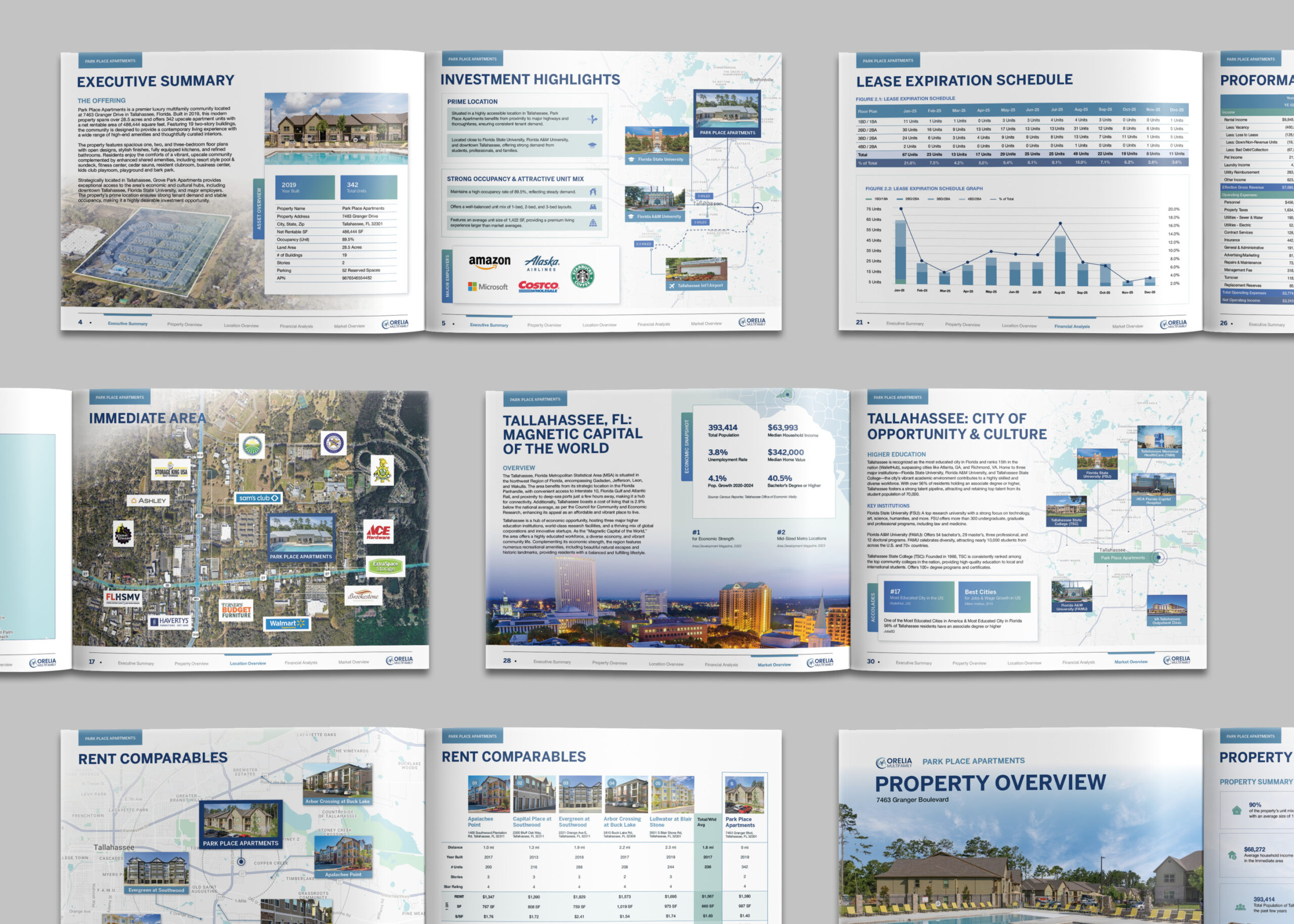
Finally, make sure everything ties together. Proofread thoroughly, double-check the data, and ensure your OM flows logically. A cohesive, professional presentation reflects positively on your team and gives the deal the credibility it deserves. If you’re producing multiple OMs regularly, partnering with a specialized design team can help you maintain consistency and scale without sacrificing quality.
Creating a strong offering memorandum is both an art and a science. It’s your opportunity to present the property in the best light, answer investor questions proactively, and position your deal as a can’t-miss opportunity.
Preparing a new OM? Keep this checklist handy — and if you’re looking to streamline the process while elevating quality, we’re here to support your team with professionally crafted, investor-ready materials.

